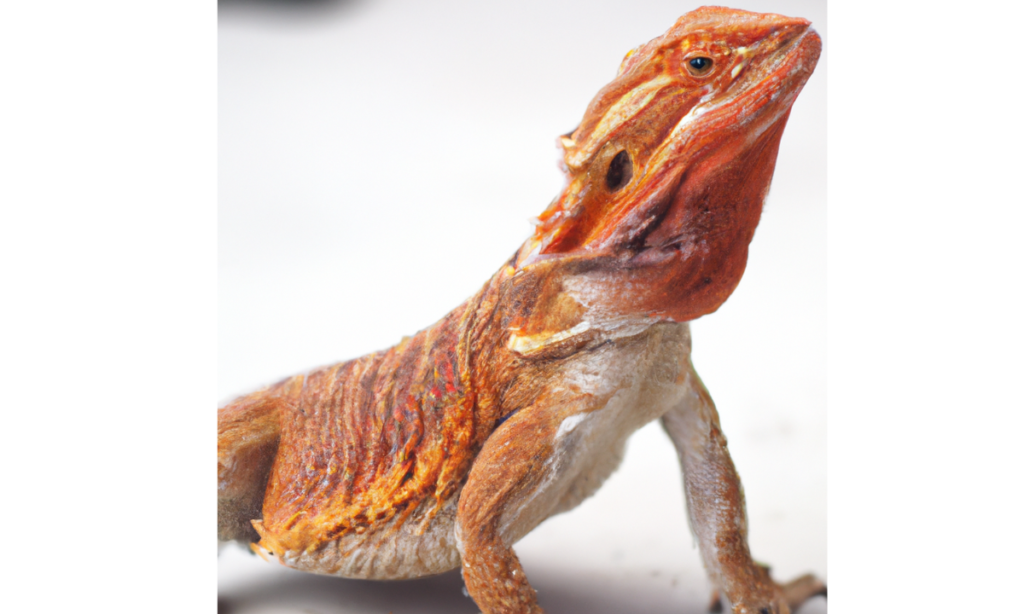Welcome to our comprehensive guide on the Red Bearded Dragon, the magnificent reptile that captivates the hearts of numerous herpetology enthusiasts. In this article, we shall delve into the intriguing realm of these creatures, exploring their distinctive characteristics, habitat, diet, and much more. Join us as we unravel the secrets of the Red Bearded Dragon and gain a profound comprehension of these captivating reptiles.
The Enthralling Red Bearded Dragon
Scientifically known as Pogona vitticeps, the Red Bearded Dragon is a lizard species native to the arid regions of Australia. Renowned for their striking appearance and captivating demeanor, these extraordinary creatures possess several noteworthy features that set them apart.
Appearance and Physical Attributes of Red Bearded Dragon
The Red Bearded Dragon derives its name from its striking coloration and the presence of a distinctive beard-like structure beneath its throat. This beard exhibits a remarkable ability to transform its hues, ranging from a fiery crimson to a pale golden, depending on the dragon’s mood and surroundings. This unique adaptation serves as a visual display during courtship rituals and functions as a mode of communication.
With an average length spanning from 18 to 24 inches, the Red Bearded Dragon showcases a robust and muscular physique. Its body is enveloped in rough, scaly integument, providing a protective armor against the harsh desert environment. These reptiles possess sharp talons and a lengthy, powerful tail, which they employ for defense and equilibrium.
Habitat and Distribution
Red Bearded Dragons primarily inhabit the arid regions of central and southeastern Australia. Their natural habitat comprises rocky outcrops, woodlands, and dry scrublands. These reptiles have adeptly adapted to the harsh desert conditions and possess exceptional skills in regulating their body temperature. They bask under the sun during daylight hours and seek refuge in crevices or burrows to escape extreme temperatures.
Behavior and Temperament
Red Bearded Dragons are diurnal creatures, exhibiting peak activity during the day. They display a wide array of fascinating behaviors and possess an inquisitive nature. These reptiles are known for their ability to inflate their beards, open their mouths, and engage in head-bobbing displays as a means of communication or to establish dominance.
While their displays may exude a fierce demeanor, Red Bearded Dragons are generally docile and make excellent companions when provided with proper care. They have the capacity to develop a bond with their owners and can exhibit considerable interactivity. However, it is crucial to handle them delicately and with utmost care to ensure their well-being.
Red Bearded Dragon’s Habitat and Care
Creating a suitable habitat for your Red Bearded Dragon is paramount to its health and well-being. Let us explore the key elements required to provide a comfortable and enriching environment for these captivating reptiles.
Enclosure Setup
When preparing the enclosure for your Red Bearded Dragon, numerous crucial factors must be taken into consideration. The enclosure should offer ample space for the dragon to move around freely. It is recommended to provide a tank with dimensions of at least 48 inches in length, 24 inches in width, and 24 inches in height for an adult Red Bearded Dragon. Its similar to that of a Blue Bearded Dragon
Ensuring the enclosure possesses a secure lid is imperative to prevent escapes and safeguard the dragon from potential predators. Proper ventilation and lighting should also be incorporated within the enclosure. To simulate the dragon’s natural habitat, a combination of UVB lighting and heat lamps ought to be installed.
Substrate and Temperature
Selecting the appropriate substrate is vital to maintain a healthy environment for your Red Bearded Dragon. Options such as reptile carpet, ceramic tiles, or paper towels are preferable, as they facilitate ease of cleaning and minimize the risk of impaction.
Maintaining an optimal temperature gradient is essential for the well-being of your Red Bearded Dragon. The enclosure should include a basking spot with temperatures ranging from 95 to 105 degrees Fahrenheit (35 to 40 degrees Celsius). The cooler side of the enclosure should maintain temperatures of approximately 75 to 85 degrees Fahrenheit (24 to 29 degrees Celsius).
Diet and Feeding
Providing proper nutrition is crucial for the growth and development of Red Bearded Dragons. Their diet primarily consists of insects, vegetables, and fruits. Insects such as crickets, mealworms, and dubia roaches should constitute the majority of their protein intake. Leafy greens, including collard greens and mustard greens, should be provided on a daily basis, accompanied by occasional servings of fruits such as strawberries or blueberries.
Before feeding the insects to your dragon, it is important to dust them with a calcium supplement to ensure they receive adequate amounts of this essential mineral.
Conclusion
The Red Bearded Dragon is undeniably an enthralling reptile that never ceases to impress with its striking appearance and distinctive behaviors. Comprehending their natural habitat, care requirements, and dietary needs is vital to providing them with a happy and healthy life in captivity. If you are contemplating adding a Red Bearded Dragon to your family, remember to provide them with a suitable enclosure, a well-balanced diet, and the love and attention they deserve. With proper care, these majestic reptiles can bring years of joy and companionship.

